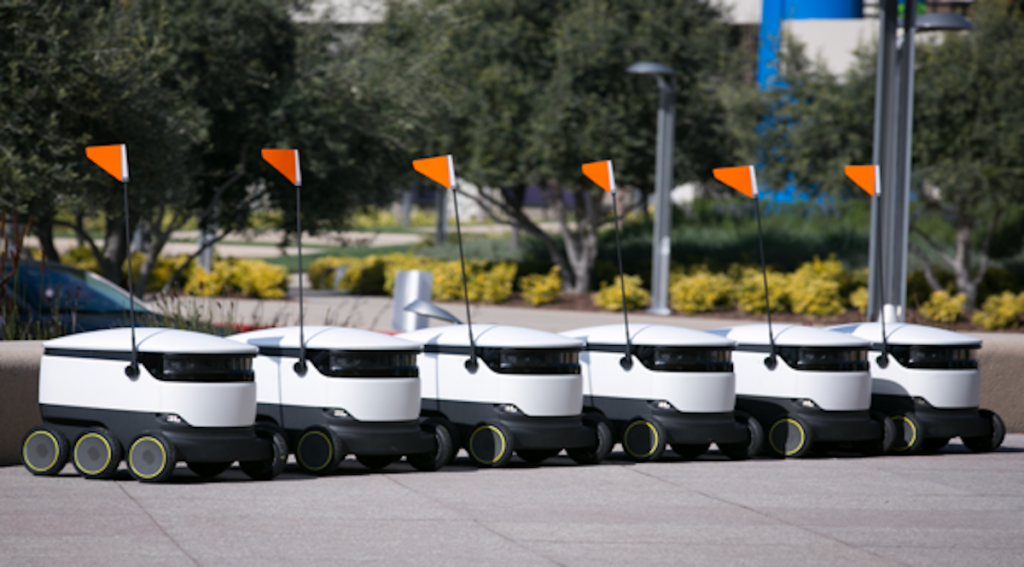
INTRODUCTION
Autonomous delivery robots are machines that can transport goods without human intervention. They can navigate sidewalks, streets, and other environments to deliver packages and groceries.
A delivery robot is an autonomous robot that provides “last mile” delivery services. An operator may monitor and take control of the robot remotely in certain situations that the robot cannot resolve by itself such as when it is stuck in an obstacle. Delivery robots can be used in different settings such as food delivery, package delivery, hospital delivery, and room service
WORKINGS:
Delivery robots are mobile robots designed to transport goods efficiently over short distances. These robots come in various forms, each suited to different environments, tasks, and delivery method. For example, ground delivery robots are typically wheeled machines that navigate city streets and sidewalks to deliver goods. Alternatively, drones are aerial delivery robots used to fly goods to recipients. Different demands require alternative delivery methods. Having multiple options available helps companies determine the best technology for their use case.
Delivery robots are equipped with advanced technologies such as sensors, cameras, GPS, and artificial intelligence capabilities. These components work together to navigate environments, avoid obstacles, and ensure safe and efficient deliveries. Robots use a combination of LIDAR (Light Detection and Ranging) and computer vision to create detailed maps of their surroundings, enabling them to operate in various environments, from urban streets to more controlled settings like campuses.
APPLICATIONS:
Last-mile delivery involves robots transporting packages from local distribution centers to customers’ doorsteps. They are especially effective in dense urban areas where traffic congestion can slow down traditional delivery vehicles.
In food delivery, many restaurants and food delivery services use robots to deliver meals, offering contactless delivery options for customers. This application has grown in popularity, especially during the COVID-19 pandemic, as it minimizes human contact and enhances safety.
On campuses and business parks, robots deliver goods between buildings, ensuring quick and efficient transportation. They often operate on predetermined routes and schedules, which makes them reliable and predictable.
Benefits
- Efficiency is a key advantage, as delivery robots can operate 24/7, reducing delivery times and increasing the number of deliveries made each day. Their ability to follow optimized routes and avoid traffic ensures timely deliveries, even during peak hours.
- Cost savings arise from automating the delivery process, which reduces labor costs and allows companies to allocate resources more effectively. This is particularly beneficial for businesses with high delivery volumes, as it allows them to maintain competitive pricing while improving service quality.
- Robots help decrease traffic by reducing the number of delivery vehicles on the road, particularly in urban areas. This contributes to a more efficient transportation network and lessens the environmental impact of delivery services.
- Delivery robots offer ground and aerial transport options. Drones, specifically, are great options for fast delivery. Additionally, they can access harder-to-reach places. Ground delivery robots can carry larger or heavier payloads.
Limitations
- Delivery robots are typically designed for short distances and may not be suitable for long-range deliveries. Their reliance on battery power means they must be recharged regularly, which can limit their operational range and efficiency.
- Navigating complex urban environments and dealing with unpredictable obstacles can be challenging for robots, requiring advanced programming and regular updates. They must be able to adapt to changing conditions, such as roadworks or pedestrian traffic, to function effectively
REFERENCE LINK:

